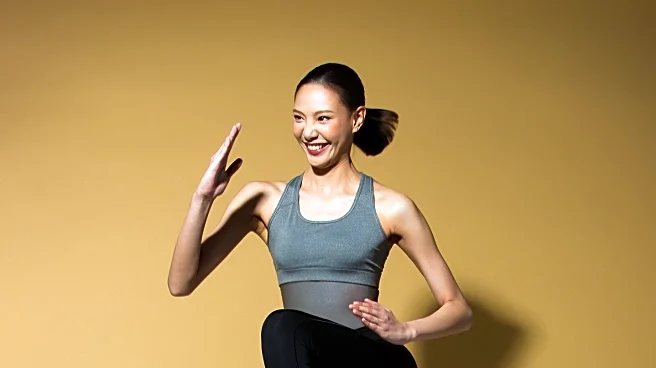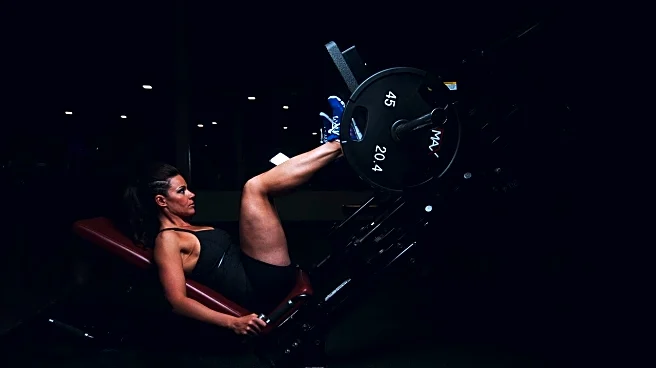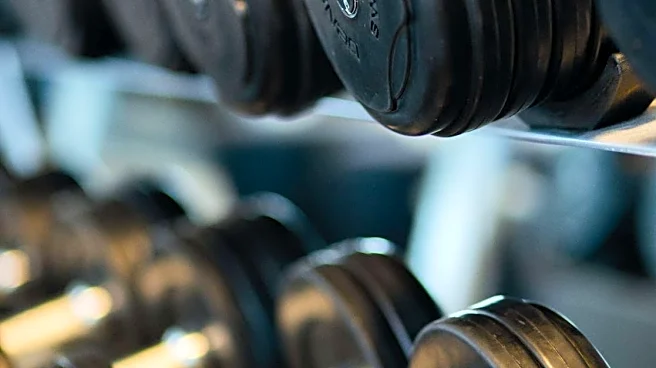What's Happening?
Kate Rowe-Ham, a menopause fitness coach, has shifted her exercise routine from high-intensity interval training (HIIT) and spin classes to a combination of walking and weightlifting. This change was prompted by her experience with perimenopause symptoms such as anxiety, breathlessness, and joint pain. Rowe-Ham found that incorporating walking into her routine significantly reduced her pain levels and improved her overall well-being. She emphasizes the importance of strength training to counteract the decline in estrogen, which is essential for muscle growth. Walking is also highlighted for its benefits in reducing cortisol levels, which can help alleviate hot flushes and improve sleep quality.
Why It's Important?
This shift in fitness approach is significant as it addresses the specific needs of women experiencing perimenopause, a phase that can bring about various physical and emotional challenges. By advocating for a routine that includes walking and strength training, Rowe-Ham provides a sustainable and effective way for women to manage symptoms and maintain their health. This approach not only helps in managing weight and reducing the risk of diabetes and heart disease but also supports bone density, which is crucial as estrogen levels decline. The broader implication is a potential shift in how fitness is approached for aging populations, emphasizing adaptability and long-term health benefits.
What's Next?
As more women become aware of the benefits of tailored fitness routines during perimenopause, there may be an increase in demand for fitness programs that cater specifically to this demographic. Fitness professionals might develop specialized training regimens and workshops to educate and support women in managing their symptoms through exercise. Additionally, further research could be conducted to explore the long-term benefits of such routines, potentially influencing public health recommendations and fitness industry practices.
Beyond the Headlines
The cultural shift towards recognizing and addressing the unique health needs of women in their 40s and beyond could lead to broader societal changes. This includes increased awareness and understanding of menopause and its impact on women's lives, potentially reducing stigma and encouraging open discussions about women's health issues. Furthermore, the fitness industry might see a rise in products and services designed to support women through various life stages, promoting inclusivity and diversity in health and wellness.








